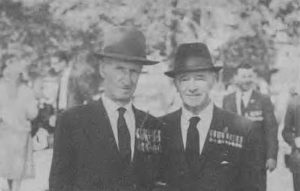The more things change – The more they stay the same! CHINA 1900 EAST TIMOR, BOUGAINVILLE and SOLOMON ISLANDS 2000 The turn of the century in 1900 saw Australian ...
Boxer Rebellion
Twins Were Pioneers of the RAN
An announcement that two brothers had been appointed to command sister ships in Australia’s Destroyer Squadron has brought to light the careers of twin brothers who were pioneers of the ...
